Artists: Hyunjin Bek (South Korea), Adriana Chiruta (Romania), Baptiste Debombourg (France), Heecheon Kim (South Korea), Fabio Lattanzi Antinori (UK), Lawrence Lek (UK), Dalibor Martinis (Croatia), Adina Mocanu (Romania), Maria Pop Timaru (Romania), Larisa Sitar (Romania), Dimitar Solakov (Bulgaria), Stardust Architects (Romania)
Title: Chronicles of the Future Superheroes
Curator: Anca Verona Mihuleț
Text: Ioana Chira
Venue: Kunsthalle Bega, Timișoara, Romania
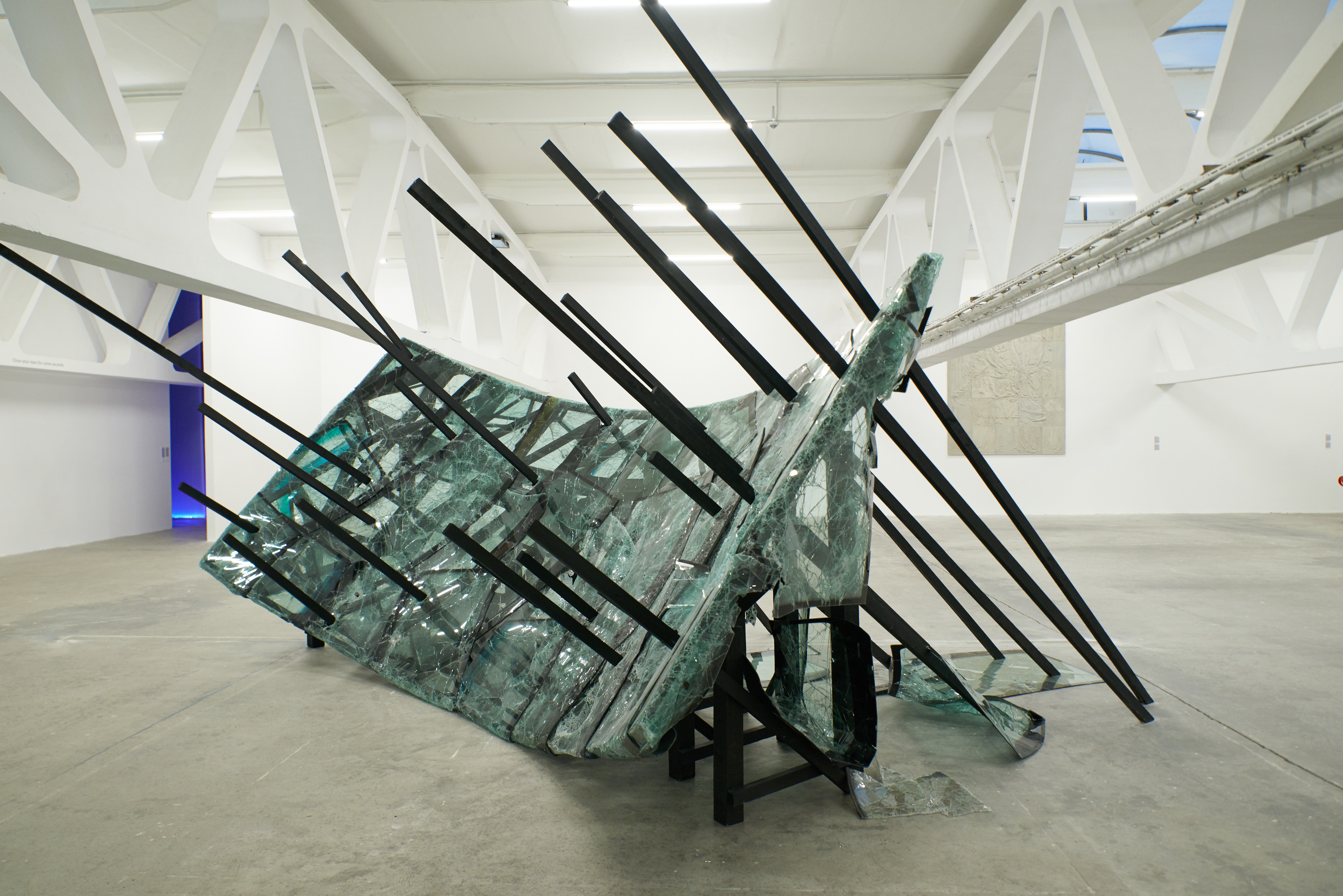
Generosity is an action more than a quality. Villagers in Romania used to build a merindar (“house of food”) on their property limit. In this miniature wooden house they would leave food and water for passers-by. They weren’t expecting any reward. Instead, their generous act signaled the possibility of a dialogue between the giver and the receiver. Inspired by the spirit of this vernacular microarchitecture object, the contemporary duo Stardust Architects (Anca Cioarec and Brîndușa Tudor) turned it into a concept for several interdisciplinary projects based on the process of sharing resources. It is the process that underlies, among others, their latest installation: Metakitchen, for the exhibition Chronicles of the Future Superheroes, curated by Anca Verona Mihuleț at Kunsthalle Bega (Timișoara).
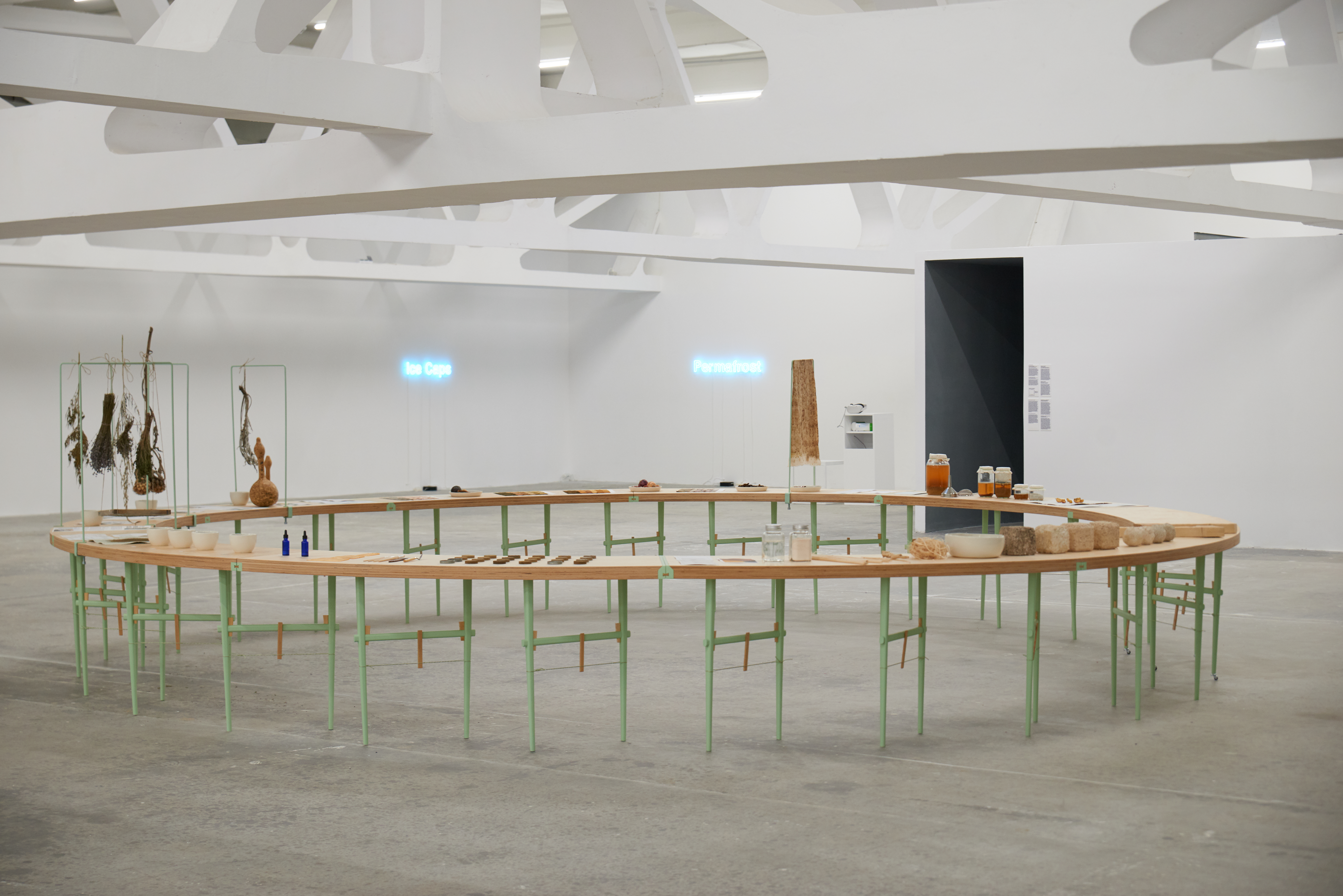
In the shape of an oversized round table at the center of Kunsthalle’s large, open space, Metakitchen gathers people around it. Five “metacooks” put their ideas on the table. All of them are collectives that include at least one trained architect with complementary professional interests. And all of them focus on recovering parts of the past for a greener future — from old varieties of vegetables (Historic Garden and Forgotten Herbs), fermentation processes (Culinaria) and natural textiles dyed with plants (Atelier Tron), to hemp-based building materials (Living cities architecture) and the use of earth in construction (Atelier Terrapia). Combining knowledge sharing practice with a social gathering mode, Metakitchen asks a key question: can we really achieve a more sustainable future without a shift from individualism towards togetherness?
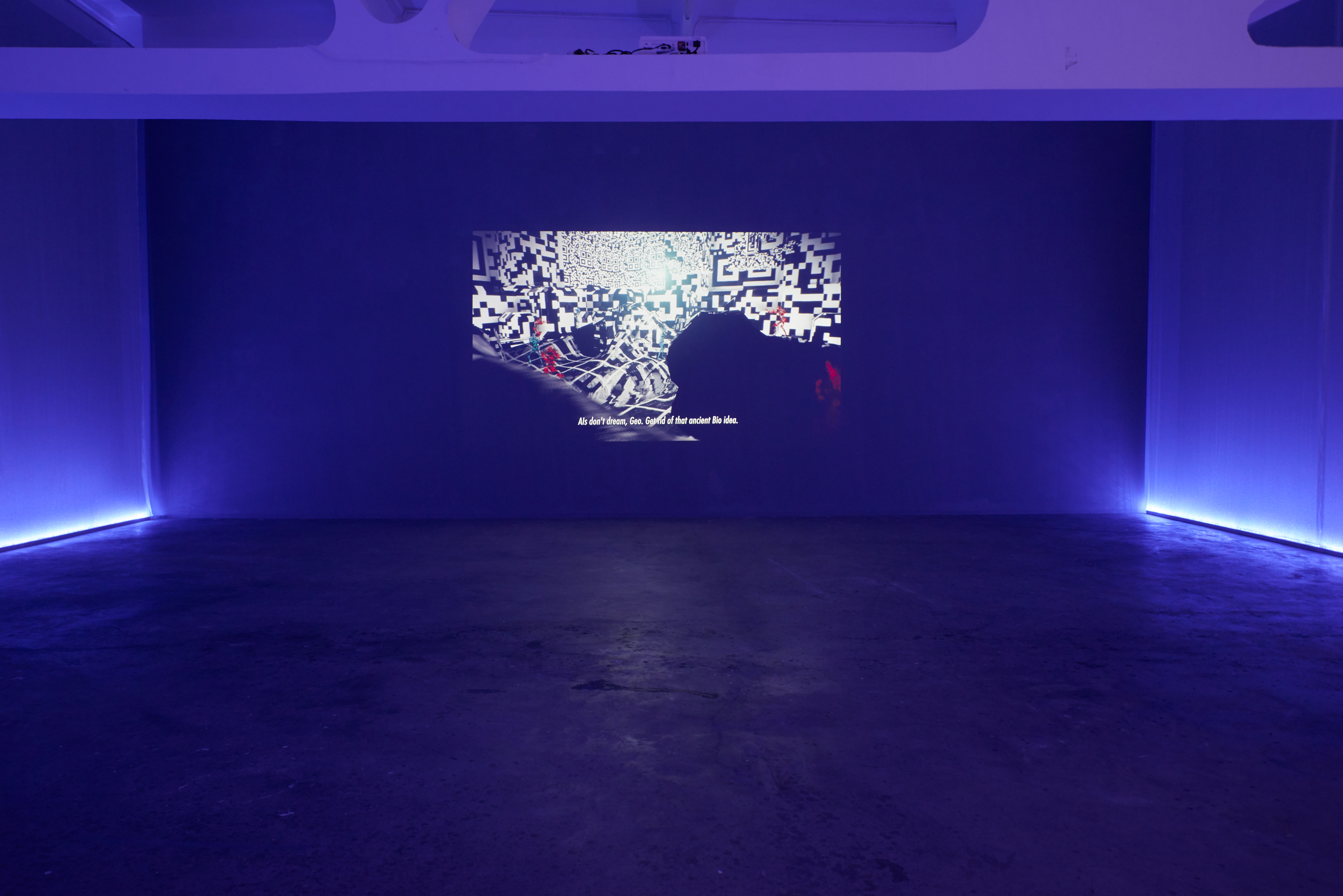
The exhibition as a whole is not shy of grappling with such complex questions. Its point of departure is a novel by American futurist Ray Kurzweil, Danielle: Chronicles of a Superheroine, which follows a young woman around the globe as she uses her intelligence and accelerating technologies to reduce pollution, cure disease, promote peace and equal rights. Danielle’s solutions to the world’s biggest challenges may be simplistic, something that appeals to idealist teen readers, but her will to question the assumptions that perpetuate human failures of imagination is inspiring.
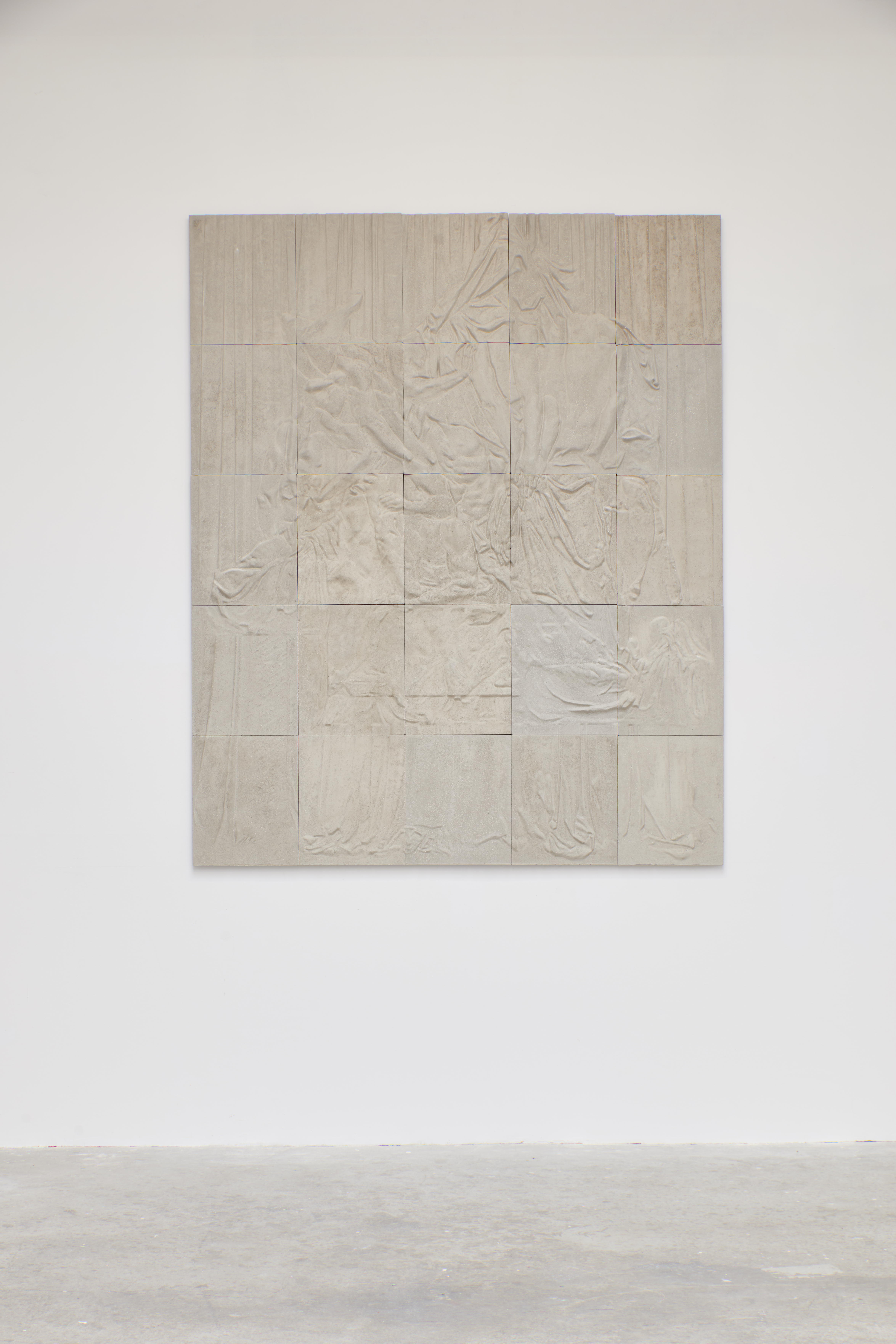
Anca Verona Mihuleț — who developed the project as a result of winning the first Bega Art Prize, awarded by Kunsthalle Bega to an outstanding Romanian curator under the age of 40 — assembled 12 artists from six countries (Bulgaria, Croatia, France, Romania, South Korea, UK) that face the challenges ahead in an equally resolute manner through their hybrid practices at the intersection of visual arts, architecture, performance, choreography, and engineering.
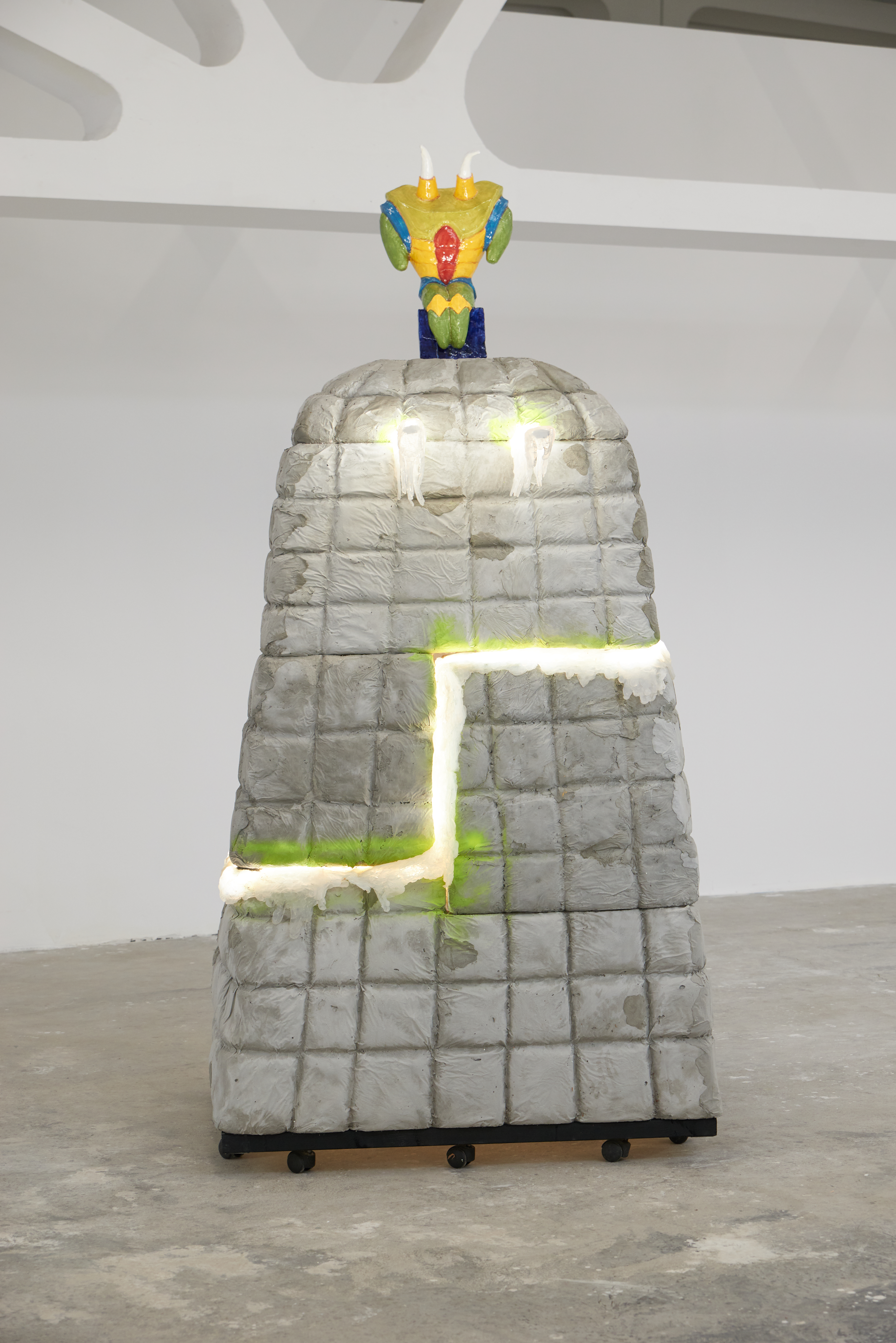
Similarly to Stardust Architects, artists such as Larisa Sitar and Maria Pop Timaru approach the future by looking at the past and “skipping” the present. “If we are to think about it analytically, the present is, indeed, just a fragile fracture between past and future,” points out Anca Verona Mihuleț in an email exchange for this article. With her large-scale bas-relief, in which human figures fade to grey, merging with the drapes and almost dissolving into the background, Larisa Sitar “encourages us to use the programmatic art made from antiquity up to modernity in order to position ourselves in relation to the contemporary human body that loses some of its carnal constitution and is revitalized by technology,” says the curator. “Maria Pop Timaru imagines a guardian insect that will save humankind from the top of an Egyptian pyramid – her suggestion may bewilder at first, but the sculptural installation transports us into a post-humanist period in which the contemporary social topos is questioned and declared inadequate. In short, Maria suggests we go beyond the current paradigms and learn to look far afield. Larisa’s and Maria’s works are indicative of a hidden leitmotif in the exhibition: ‘ways of seeing’ (John Berger, 1972). Both works employ fragments of the past that speak of the future – more precisely, that caution us about the pitfalls of the future.”
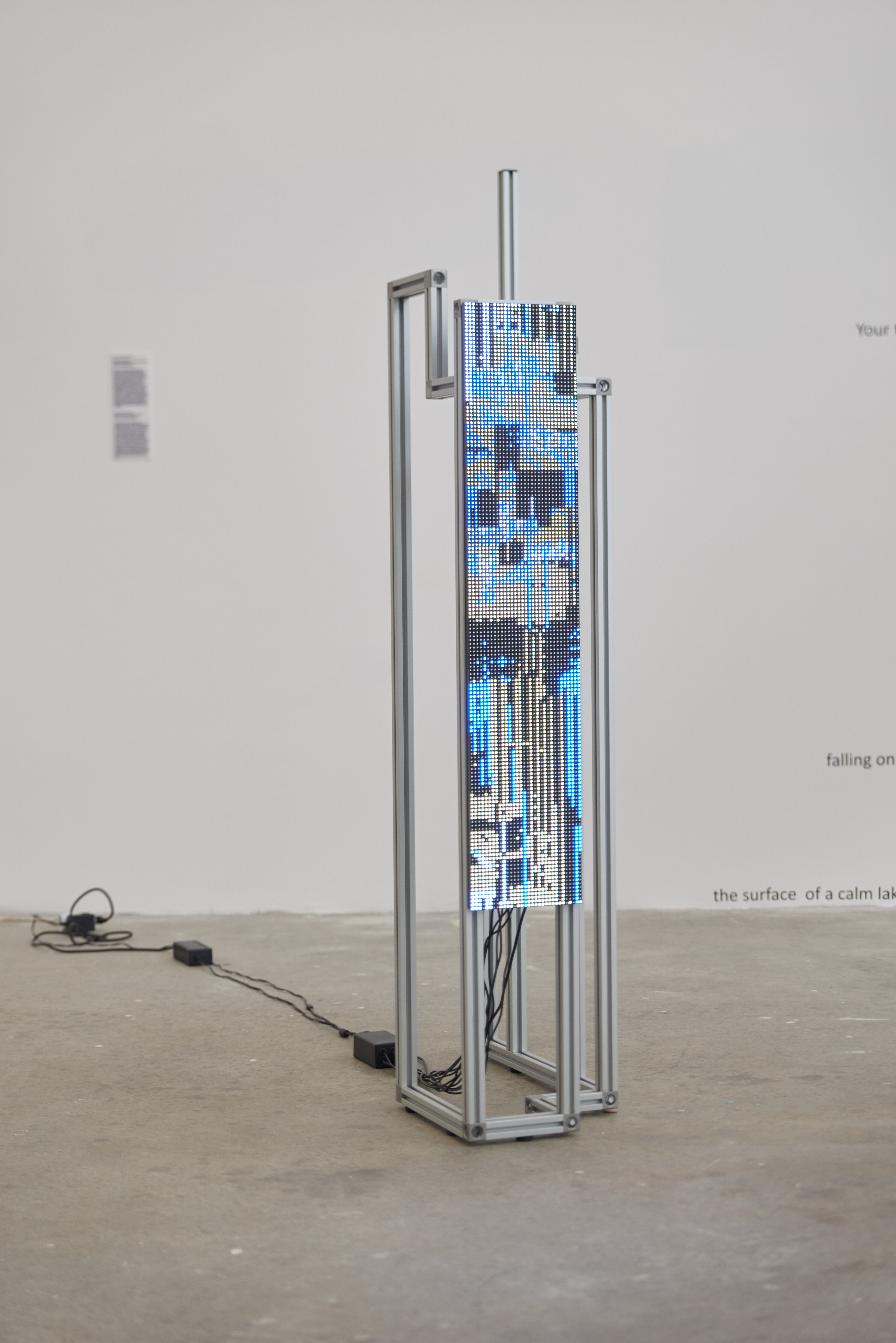
Cautionary tales are encoded in Fabio Lattanzi Antinori’s works, too. With Dataflags, a large silkscreen print that needs to be touched by the viewer to reveal its true nature, the artist reifies the daily financial data of Lehmann Brothers in its last ten years by having a soprano sing them. The work is a corporate flag of bankruptcy, that is to say of human failure so consequential that it reverberated across the world. His second piece in the exhibition focuses on a flash crash that hit Google in 2013, sending the company’s stocks into a sudden spiral and causing sharp price declines. A sculpture with a built-in custom code that arbitrarily rearranges the financial graphs of the crash, Masters and Slaves: Google embodies an ecology of data that is created by machines and has become incomprehensible to humans, indicating a reversal of power dynamics between humans and machines. By crunching large swaths of data, AI and algorithmic systems are now capable of – and responsible for – crucial processes and decisions. They are also able to foresee events with an increasing degree of accuracy. Will we make them responsible for imagining the future?
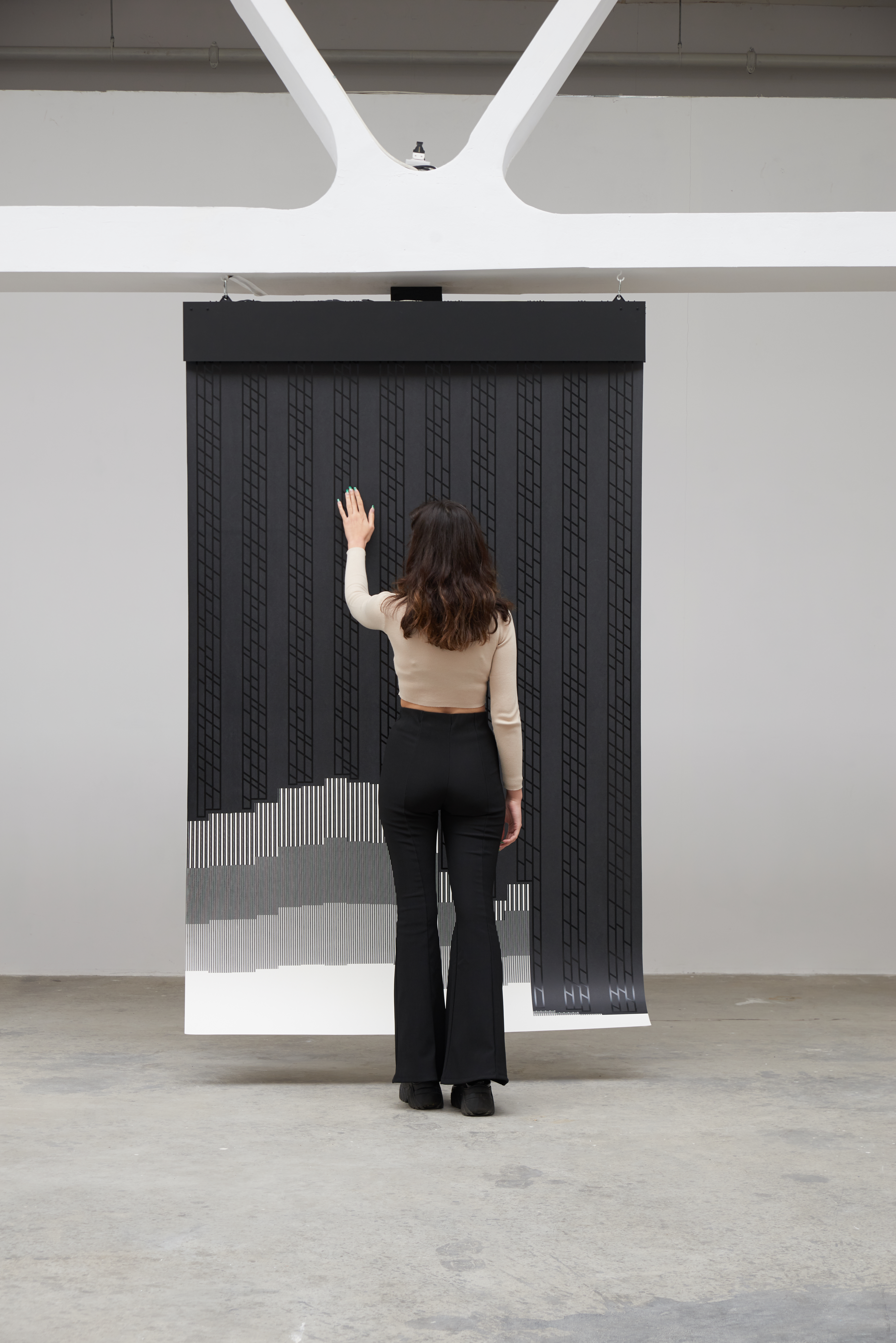
Lawrence Lek’s CGI fantasy AIDOL situates itself in such a future – an automated, algorithm-propelled world where machines already have the capacity for love and suffering, but they aspire to express themselves by making art. As GEO, an AI with artistic yearnings, says: I still want to be everything. Isn’t that the point of superintelligence? To be a gambler, philosopher, artist, musician, gamer, architect. Both Antinori and Lek ask what will happen when imagination and self-expression cease to be powers of humans alone.
Confronted with the sublime, distressing consequences of this development, we might find solace in Adriana Chiruta’s performative installation of text, video and sound. “Close your eyes for some seconds / and don’t forget to dream when you open them”, says one of the eleven writings printed on the walls and the floor of the exhibition venue. With Techniques to get out of the needle for those who believe they are butterflies, Chiruta proposes a “social training in respect and care for our own fragility and sensitivity” (Anca Verona Mihuleț).
The installation is part of a larger group of works in the exhibition that address our individual and collective fragility. We are only a part of the whole, yet the only responsible for its destruction. Dimitar Solakov prompts a reflection on this reality through his VR animation with a trenching argument: “Things are changing as they’ve always had in an endless cycle, and humanity still cannot realize just how fragile it is, where its place in this cycle is. So little of what people think and worry about is meaningful. They cling to the superficial, feeding greed, which grows more and more powerful and reckless. The tower of collective greed must topple. Let humanity tip over. I need fewer priorities.” For Baptiste Debombourg, creating something out of chaos is a modus operandi. The contextual installation he produced for Kunsthalle Bega – an enormous radar-shaped structure made of shattered car windshields from the region around Timișoara – brings a scene of apparent wreckage into the safe space of the exhibition, viscerally reminding us of our vulnerability to accidents and hubris.
A monument to resilience, Debombourg’s work is all the more eloquent these days, when we’ve watched the residents of Lviv wrap historic statues in protective sheets or foam to safeguard them in case of Russian bombardments. ”Strictly visually speaking, the wrapped statues resemble contemporary artworks. They made me think how essential culture is for the memory and the identity a place and how much care is needed to keep alive an artistic or cultural message,” says Anca Verona Mihuleț. Her exhibition project manages to outline the idea of a meta-community located outside of the global dystopia, at a point where geographical regions – the Southeast Europe and the Southeast Asia – meet. It is not a place of escape, but of reconsidering how art can expand the possibilities for a troubled world through imagination, community knowledge and moral behavior. “In the last few years, I have seen the artistic production grow with increasingly relevant projects based on long-term research, on the awareness of specific contexts and communities, on engagement more than implementation. What I detect is a decline in the artists’ interest in globalization. Instead, they have started to look in depth at their immediate surroundings, to take action in matters that concern them directly and that they feel responsible for. It’s a sort of soft localism that reconfigures the current art scene. Because of artistic or curatorial projects we learn about historical events that were erased from official documents, about forgotten thought leaders, about extinguished animals or plants, about geological facts of our planet or about the daily life in militarized areas. Art truly has an encyclopedic power that allows for knowledge expansion on multiple levels,” adds the curator.
Chronicles of the Future Superheroes analyses the function of art especially in relation to a young audience in search of answers to questions about the future of the planet, the interplay of local and global, or the passage of time. Future superheroes, it suggests, don’t need uncanny powers but ethical practices: generosity, solidarity, care.
